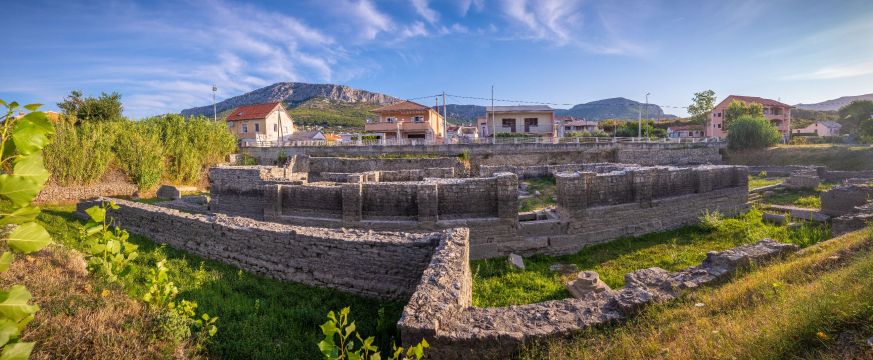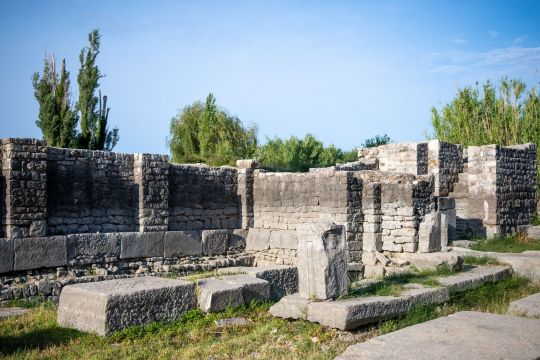Close by the Jadro, to the east of Salona, there are remains of churches on the site known for centuries by the local people by the true, descriptive name of Šuplja crkva (Hollow Church). The name originates from the time when here there were walls of an unattended church with a collapsed roof, recorded on the Camuci’s map of 1571. Remains of a three-aisled basilica, dedicated to Ss. Peter and Moses (sv. Petar i Mojsije) appear to have existed at the end of the 17th and the beginning of the 18th centuries, when the newly arrived inhabitants of Solin named them so picturesquely. The church is from the 11th century, linked with the coronation of Zvonimir as a Croatian king in 1075, built within a large early-Christian basilica, probably from the 6th century. Next to the church, there was a Benedictine monastery, possibly connected with the dynasty, which is a possible reason why the new church was built within the old one, to become the site of such an important event. This fact has made this early-Romanesque three-aisled basilica particularly famous.
Today, the landscape differs very much from the landscape of the early-Christian time and the 11th century. The river flowed down a completely different bed, and the surrounding terrain was lower. The river nowadays flows close to the site, flooding the old walls remains that, due to the new configuration of the surrounding land, often remain under water. This is an excellent and very clear example of how the small Jadro has gradually changed the configuration of the landscape of the Solin’s monuments.
This is an interesting case of an early-Romanesque church being built in the 11th century within the remains of a previous one, the walls of the latter are still clearly visible under the fence that separates the archaeological site from the road leading to Majdan. Somewhat to the west from here, the Jadro was tributed by the mountain creek known as Ilijino vrilo (Elia’s Spring; <) springing near Rižinice, below Mount Kozjak’s eastern slopes. This too contributed to covering the remains of the church with soil and the changing of the landscape.
The sequence of building at the locality was established by the respected researcher of Salona, the Danish architect Ejnar Dyggve, who, in limited archaeological excavations, established the main structure of both the old-Croatian church and the later one built within it. Excavations at this site were started in 1927 and their results solved an important issue: they identified King Zvonimir’s coronation church. This puzzle was solved by L. Katić, using written sources, archaeological finds and the altar-screen inscription.
Excavations were continued again as late as 1990, and further excavations are still pending. Still to be carried out is the very complex task of draining water from the site into the nearby river. This work will prevent possible flooding of the unearthed foundations and the conserved walls.
The three-aisled basilica had a specific western façade, the so-called westwerk, and a bell tower, and three apses incorporated right into the church body at its eastern end. In the church, there was a large, three-part altar screen, bearing the inscription that revealed its titulars, Ss. Peter and Moses (sv. Petar i Mojsije), and, with help from written historic sources, the course of important historic events, as well. Some scientists believe that parts of the altar screen were also the slabs that now make the baptismal font in the St. John’s Baptistery of Split, including the famous slab usually interpreted as presenting an enthroned Croatian king.
[Edit mode] Swiper Gallery: att Šuplja crkva










